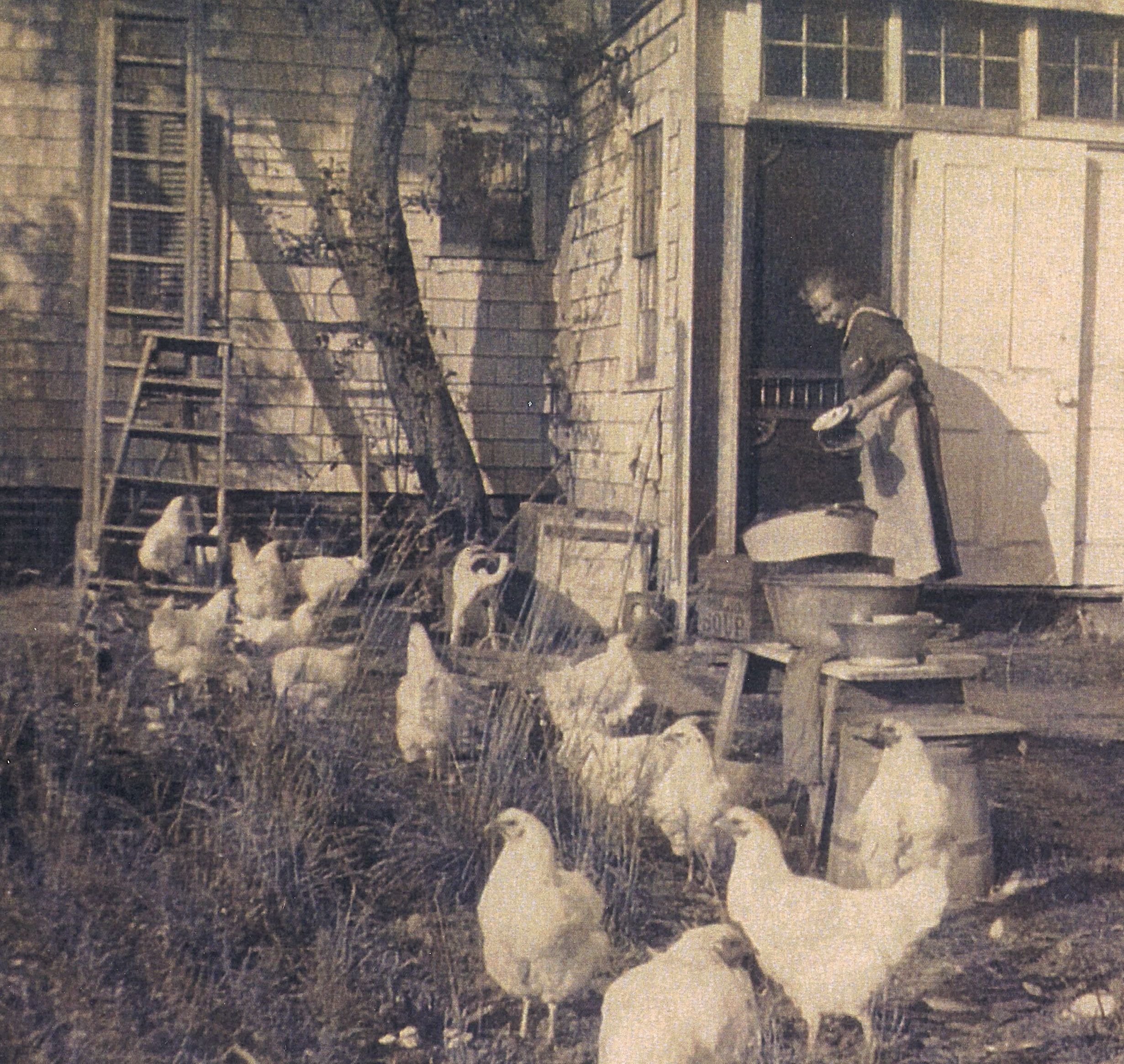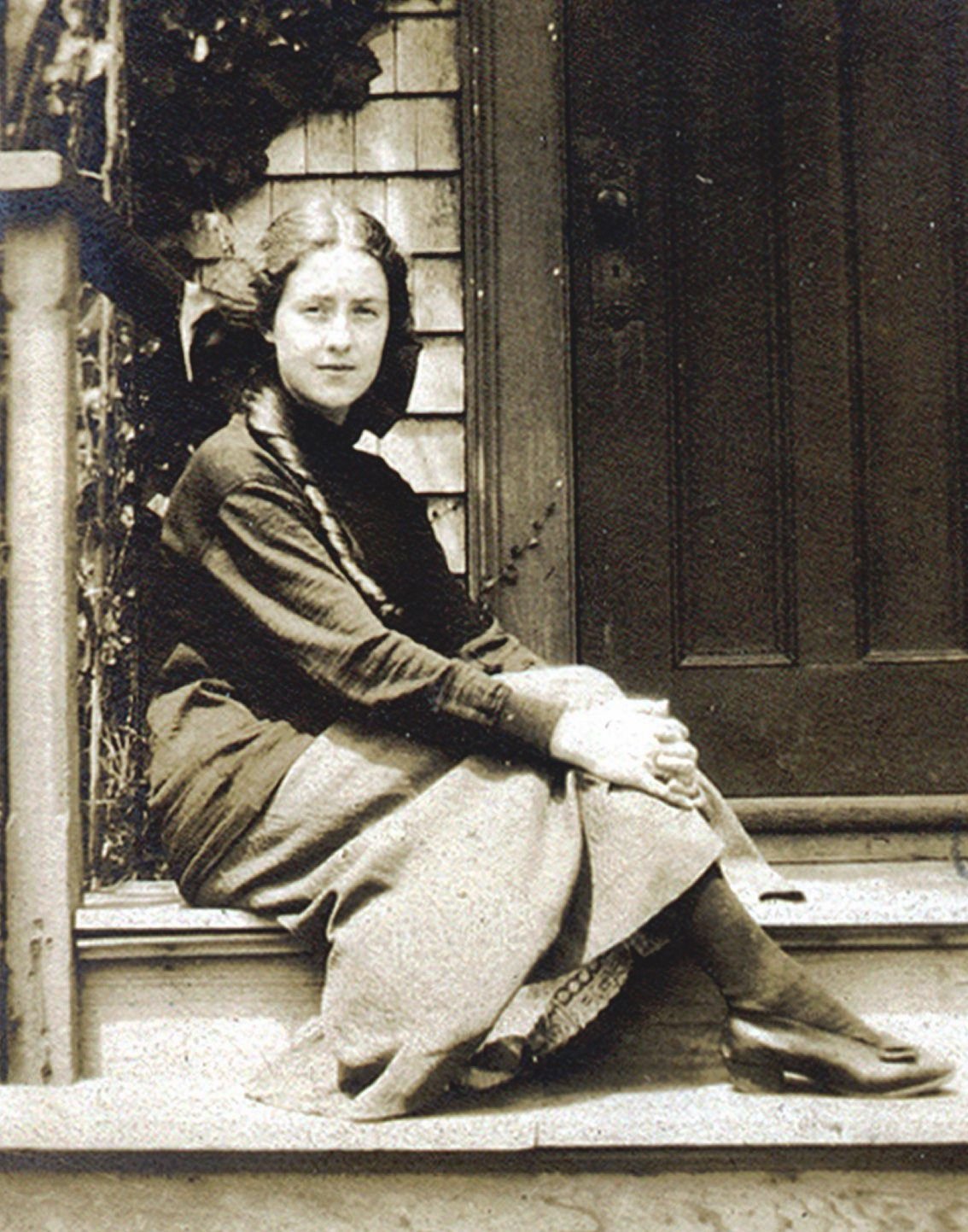I was eight years old in 1905 and everything about the village at that time is vivid in my mind. The main street was lined with silverleaf poplar trees, some over 2 feet in diameter. I was told that the saplings were brought from England. As the years went by these trees had become a nuisance. They grew to large shady trees but were too prolific, spreading everywhere and hard to control.
The only large public buildings in 1905 were the village school, the Methodist Episcopal church, the Standish Opera House and the Baptist Church in the Lower Village. The town hall or office was a medium-sized building situated half way between the village of South Yarmouth and Yarmouth.
The school was set back from the street between the Methodist Episcopal Church and the home of Orlando Wood. Children started going to school at 5 years of age. There were two sidewalks leading up to it, one on the right for the boys and one on the left for the girls. The center was kept green and mowed. The boys’ playground was on the north side of the building and the girls’ on the south side. There were nine grades in the school, three each in the primary, the intermediate and the grammar school upstairs. A section of the grammar school was partitioned off for the Sloyd or wood-working classes. Each room had only one teacher, and special teachers came once a week to teach music, drawing, sewing, and woodworking. I was in the fourth grade in the intermediate room in 1905. Each room contained a large wood or coal burning stove for heat.
South Yarmouth School.
On St Valentine's Day we exchanged Valentines with our friends and enemies. Some were very fancy and beautiful and some were horrible. On Memorial Day, May 30, we always had a special program in our flower decorated school rooms to which our parents were invited. Afterwards we marched two by two to the cemetery, a boy drummer at the head with a girl carrying our flag. The rest of the children carried flowers from the room decorations to place on the soldiers’ graves.
All during May we hung beautifully trimmed May baskets to our friends, knocking on the door and hiding outside, usually in the early evening. After we were found, we generally went inside and helped eat the goodies they contained.
There were kerosene lamps on Main and Bridge streets. The lamplighter came at dusk every day to fill and light the lamps. Many families had lamp posts in their own yards and also hitching posts for horses out in front. Kerosene for the lamps was bought at the grocery store usually with a small potato on the spout to keep it from spilling. There were a lot of horses in 1905 and a town pump and horse trough was situated on Main Street in front of the school. Every day the janitor brought a pail of this fresh water to each school room where it was placed on a low shelf with a tin cup beside it. Some of the children brought their own collapsible tin cups and kept them in their desks.
Most every family raised chickens and some fattened pigs to be slaughtered in time for Thanksgiving and Christmas. Our family invariably had roast stuffed chicken at Thanksgiving with cranberry sauce, vegetables and a choice of mince or pumpkin pie. At Christmas we generally had roast loin of pork with applesauce, homemade yeast biscuits, vegetables and always a suet pudding with whipped cream. Our recipe for this was brought by my grandmother from her home in New Hampshire.
We rarely had snow before Christmas but plenty during the next 3 months. The snow plows came early and cleared the sidewalks so the children could get to school by 9:00 a.m. The plows were a triangular contraption made of wood, weighted down by a huge rock and the driver. The plow was hitched by chains to the horse's harness.
The bridge across Bass River was constructed of wood and the toll house was still beside it, but it was not used then as no tolls were collected in 1905. One day I stood on the bridge and watched the packet David K. Akin sail up the river and anchor at Fuller's Wharf. It was quite a thrill to me as this was the largest boat I had seen. The cargo was mostly coal, grain, and flour for Fuller's grain store. Not far from the bridge was a very busy place, the village blacksmith shop. Next to that was a paint store and the undertaking parlor beside the Bass River Savings Bank.
David K. Akin packet ship.
The post office was a small building on the corner of Main and Bridge street. The railroad station and freight buildings were situated beside the track on Station Ave. The stage from the village met the trains and carried the passengers and mail.
Christmas time at the Methodist Episcopal Church where I went to Sunday school will always remain a happy memory. Each Sunday during December we studied the Bible story of the Lord's birth, learned to sing Away in a Manger and many other Christmas hymns, also learned recitations to be given at the Sunday Christmas church service.
On Christmas Eve all the Sunday school and their parents attended a party held in the sanctuary. A huge beautifully trimmed tree nearly reached the ceiling. It was placed in the back of the altar rail. Parents secretly brought many gifts for their children and teachers which were placed among the branches or under the tree. After singing Christmas songs we were asked to keep very quiet to see if we could hear Santa Claus coming. Soon sleigh bells could be heard coming nearer and old Santa came bounding in to distribute the gifts. Over his shoulder he carried a bag which contained boxes of hard candies for each child. I had reached the age to notice that Santa looked surprisingly like a man in town. Very few people had Christmas trees in their houses. We never had one. We had a green wreath with red berries on our front door, gave gifts and sent greeting cards to our friends and relatives. We children always hung our stockings on the mantle before going to bed Christmas Eve. In the morning we always found an orange in the toe besides apples, nuts, candy and small gifts. The oranges were very special as we rarely had one.
In midwinter came the job of cutting the ice on Long Pond. There were two ice houses, one on each end of the pond. Several men were employed to saw the ice in large squares which were packed in layers in the ice houses, each layer separated and covered by straw. This was sold during the summer to the townspeople to fill their ice boxes and refrigerators.
Summer time in 1905 in South Yarmouth was a lovely place to be. There were a few summer visitors in the village but it was still quiet and plenty of room at the beaches for swimming and picnics. There were strawberry festivals and church fairs and bean suppers and also the local baseball games with plenty of buttered popcorn.
Independence Day however was quite noisy as all kinds of large firecrackers, rockets and cap pistols were allowed.
I would like to close now with this excerpt from a poem written by Henry W. Longfellow:
“Often I think of the beautiful town
That is seated by the sea,
Often in thought go up and down,
the pleasant streets of that dear old town,
And my youth comes back to me.
By Maude (Weekes) Boesse (1897-1990)
(from our archives)
Maude Boesse









